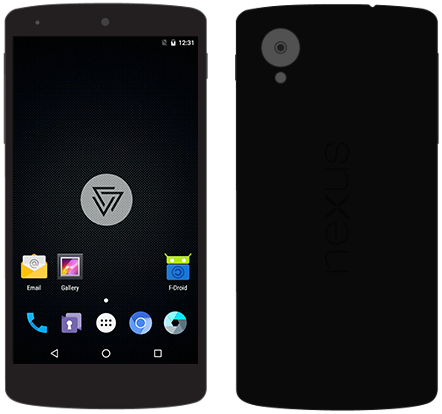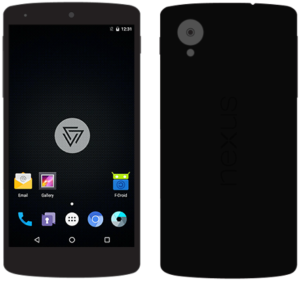
Secure Smartphone Options

This image and the Copperhead logo are the property of Copperhead. They are used here under fair use standards.
I've been concerned about smartphone security for a while and have always wanted a better solution than off-the-shelf Android. I've never been a fan-boy for IOS devices. Fact is, I have one for my day-job and I'm not impressed with their closed, centrally-controlled ecosystem. I much prefer the Android environment's look, feel, and their more anarchic Wild West development environment. I believe that the market generally provides better solutions than central planners do.
For a few years I've drooled over Silent Circle's Blackphones. The idea of splitting up multiple instances of the Android environment to segregate apps and data is quite clever. Blackphones offer other great features such as secure text and phone call capabilities. All while maintaining an Android environment with tons of available apps. I was never prepared to spend $599 on one of their devices, though. It's not the highest price point for a secure smart phone, but I'm still not ready to spend that much.
Other options have emerged fairly recently, such as Blackberry's DTEK 50 and 60 phones. We might have all presumed Blackberry's death, but they've emerged with what they claim are the "World's Most Secure Android Smartphones." Apparently they are working to establish themselves in a new niche. We applaud any company who includes security and privacy in their approach! I didn't see these around when I took action last summer, but $300-$350 is a very nice price point. These are worth further investigation on another day!
John McAfee, when he had the world's attention after being a Libertarian Party presidential candidate early last year, was talking about releasing a secure smartphone with hardware switches to physically no-kidding shut off communication features. Having the name of a famous antivirus entrepreneur on the project would certainly be a big plus for the phone's marketability. At the time, the target price point was $1,100 and it was to come out in the summer of 2018. Other secure smartphones tend to be in the $1000+ range, but $600 was already too high for me.
Smartphone Panopticon: My Call to Action
Last summer I had some good fortune in the cryptocurrency arena, so I could come up with a few hundred dollars. At that time one of my friends told me about an experience with Facebook on his smartphone. He sat down in his wife's van to drive somewhere and asked her about her "check engine" light. The next morning he logged onto Facebook and saw an advertisement asking about whether he needed help with his check engine light. I was quite disturbed by this, as I'd been hearing quite a few anecdotes that suggested smartphones were spying on people. I started thinking about how we bring our phones everywhere and the sensitive material they might collect. As a practicing Catholic I'm forced to wonder: am I making a mistake by taking mine into the confessional with me?!
A couple weeks before I heard that story I stumbled across Copperhead OS that can be loaded onto some select Android devices. While Copperhead will sell some of the newer phones with their OS already installed for $1,100+, the OS is downloadable freeware that you can load onto the older phones for yourself. The guys at Copperhead take the current version of Android, remove all of Google's proprietary code, replace it with open source, and make a series of other security enhancements.
Time to Update
So, when I had a little bit of cash to invest I found a used Nexus 6P in great condition for $200 and I flashed Copperhead onto it. Last September, however, the automatic updates started failing and I realized that I should do a complete reflash. The process is very similar to flashing the phone from its stock state. Among the benefits of updating for security purposes, I've found that Copperhead is now based on Android Oreo 8.1.0, rather than the previous Nougat 7.1.1.
Another pertinent detail is that I've updated my computer to a System 76 Gazelle running Ubuntu 16.04. So, I needed to install all of the prerequisites required for the job, just as I had done last summer.
If I was going to go through all of these steps anyways, I figured I should record the effort and share it with anybody who might be interested in what it takes to load Copperhead OS onto a smartphone. Here it is!
<iframe src="https://www.youtube-nocookie.com/embed/jAWadUth8Vw" width="560" height="315" frameborder="0" allowfullscreen="allowfullscreen"></iframe>
Please Join Our Efforts!
EDG is here to offer market-based solutions, rather than using government coercion to achieve our goals. By showing that software made by some developers is safe, we will affect the marketplace in a positive fashion. As consumers become more aware, they will demand ethical certifications. They will be willing to pay more for software that possesses such certifications.
At EDG, we are taking small steps to help you free yourself from the digital Panopticon. Please provide tips using the Contact Us link if you are aware of a topic that we should be covering or some software that we should be reviewing.
Please also register as a user using the link in the Utility Menu.
Music Credits from the video:
"River of Io"
Kevin MacLeod (incompetech.com)
Licensed under Creative Commons: By Attribution 3.0
http://creativecommons.org/licenses/by/3.0/
Posted from my blog with SteemPress : https://edgcert.com/2018/04/05/installing-super-secure-copperhead-os-on-a-nexus-6p/